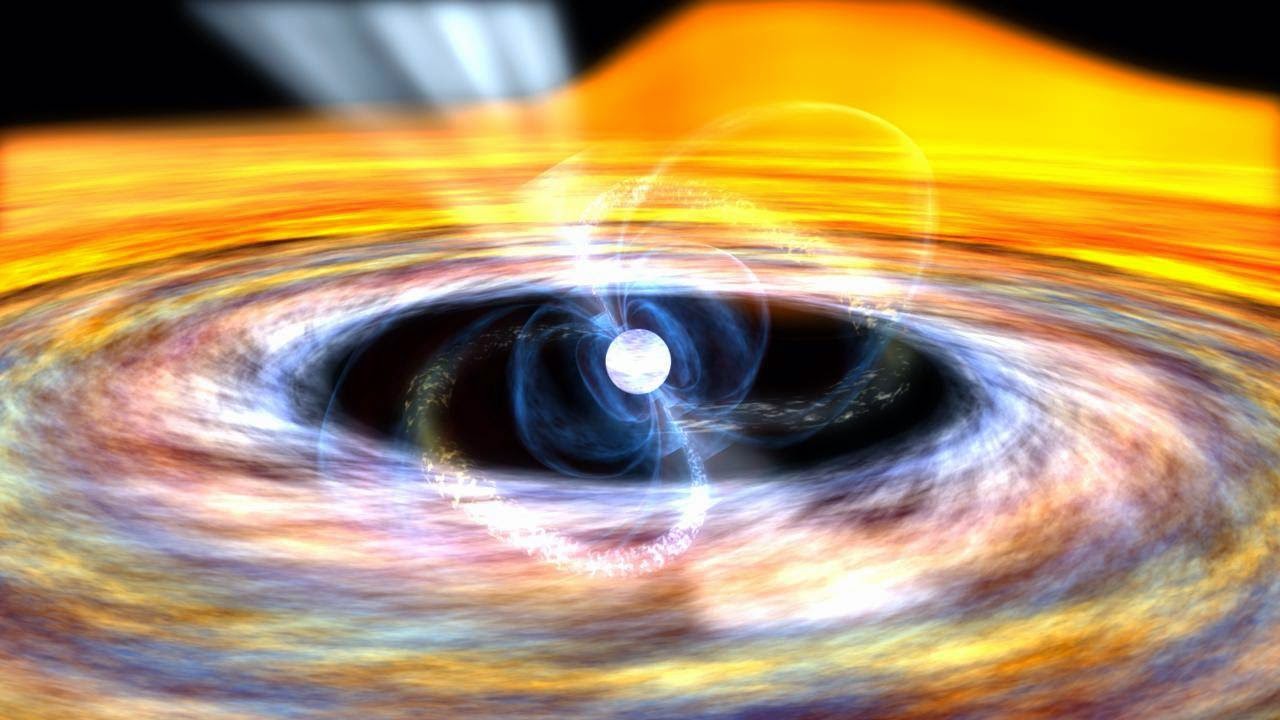The more gas neutron stars or black holes take in, the brighter they shine in X-rays. Many are glutenous, swallowing as much as 1018 (a million trillion!) of gas per second, which makes them the brightest X-ray sources in the sky. However, more and more neutron stars and black holes are discovered to emit only dim X-ray light, implying that these are not taking in a lot of gas from their companion star. It is not clear, however, why they don’t. The two leading theories are either that these neutron stars and black holes have very small companions and are hence just not very well fed, or that they have a normal gas supply but somehow spit much of this back into space. Charting the demographics of these dim X-ray binaries important for several areas of astrophysics, including the study of gravitational waves, supernova physics and binary evolution.
Many of the neutron stars and black holes that we have found in our Galaxy are not solitary but are instead orbiting through space with another star. Owing to their relentless gravitational pull, neutron stars and black holes are able to nibble gas from their companion. This makes them light up in X-rays and therefore these star pairs are called X-ray binaries. Studying X-ray binaries is important for a variety of reasons, including understanding how binaries with neutron stars and black holes are formed and evolve, how supernova explosions work, how black holes grow, and how matter behaves when subject to extreme conditions that cannot be mimicked in laboratory experiments on Earth (e.g. extreme magnetic fields, severe radiation, ultra-high densities, super-strong gravity).
We tried to solve the riddle of dim X-ray emission for a neutron star called 1RXH J173523.7-354013. To do so, we turned to optical and near-infrared telescopes. In particular, we took a near-infrared spectrum using the Very Large Telescope (VLT) aiming to determine the type of companion star and used data from the Visible and Infrared Survey Telescope for Astronomy (VISTA) in an attempt to determine how long it takes for the two stars to orbit around each other (i.e. how wide the binary is). Expecting to find a very small (white dwarf) companion star and a very small orbital period (<1 hour), our studies instead revealed the complete opposite: a red giant star and an orbital period of about 8 days!
Since red giants can donate large amounts of gas to a neutron star or a black hole, it remains a puzzle why 1RXH J173523.7-354013 is such a dim X-ray source. We speculate that gas pulled off from the companion is accumulating in a reservoir near the companion and, as it becomes hotter and denser filling up, will at some point cross a critical threshold that allows all stored gas to suddenly stampede towards the neutron star. If our hypothesis is right, 1RXH J173523.7-354013 should one day become whoppingly bright in X-rays. Let’s see if this comes true! In mean time, we continue our quest to determine what companion stars dim X-ray binaries have, which may lead us to stumble across more of them having big companions and wide binary orbits like 1RXH J173523.7-354013. Stay tuned.
Shaw, Degenaar, Maccarone, Heinke, Wijnands, van den Eijnden 2024, MNRAS 527, 7603: The nature of very-faint X-ray binaries: near-infrared spectroscopy of 1RXH J173523.7-354013 reveals a giant companion
Paper link: ADS


 Figure: Graphic illustration of the method to find hidden black holes. Whereas the black hole itself may be invisible, its gravitational pull causes the normal star to wobble. This wobble is visible as a movement in the spectral lines in the light of the star (the dark lines in the color bar). The same method is used to find planets around stars. Source of gif:
Figure: Graphic illustration of the method to find hidden black holes. Whereas the black hole itself may be invisible, its gravitational pull causes the normal star to wobble. This wobble is visible as a movement in the spectral lines in the light of the star (the dark lines in the color bar). The same method is used to find planets around stars. Source of gif: 


You must be logged in to post a comment.